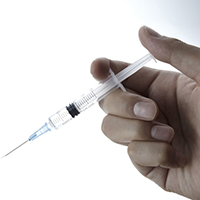Trauma, violence and recovery in the life stories of people who have injected drugs

Accepted: 4 October 2020
All claims expressed in this article are solely those of the authors and do not necessarily represent those of their affiliated organizations, or those of the publisher, the editors and the reviewers. Any product that may be evaluated in this article or claim that may be made by its manufacturer is not guaranteed or endorsed by the publisher.
Authors
This paper reports qualitative data about violence and trauma amongst drug injectors in Scotland, collected using a life story method with 55 drug injectors currently in recovery. It focusses on different types of violence and trauma that occurred whilst using drugs. Stories told of very severe and repeated traumas often involving extreme violence. One motive for escalating and continuing drug use was avoidant coping to deaden the emotions and thoughts regarding these traumas. Many traumas were due partly to the criminal drug milieu, so respondents were in a vicious cycle of using opiates and other sedative drugs to cope with the consequences of being involved in a lifestyle of using, supplying and obtaining illegal sedative drugs. Drugs were used as a dynamic method of self-medication or avoidant coping to cope with life in a criminal milieu. Traumatic events were more often described as worsening the lifestyle than as being motives for quitting. Amongst the traumas recounted were many incidents of extreme violence. Using drugs to block the psychological effects of such traumas may help explain why people persist using opiates despite experiencing evident serious harms. Interventions need to recognise this, be trauma-aware and appreciate that violence and trauma have severe adverse effects on drug injectors even when they are themselves hardened and violent.
How to Cite
PAGEPress has chosen to apply the Creative Commons Attribution NonCommercial 4.0 International License (CC BY-NC 4.0) to all manuscripts to be published.

 https://doi.org/10.4081/qrmh.2020.9073
https://doi.org/10.4081/qrmh.2020.9073



